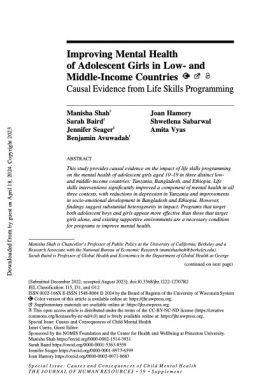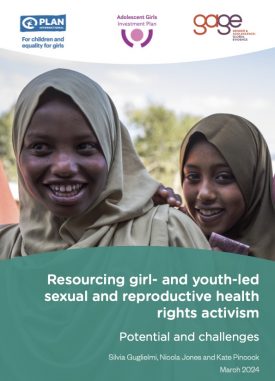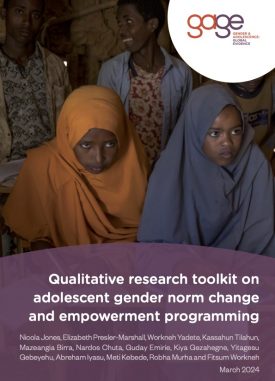Technology is uniquely shaping the life experiences and opinions of adolescents growing up in this rapidly digitizing world. In Bangladesh, this unprecedented increase in connectivity with the outside world is changing the lived realities of adolescents by challenging the boundaries of gender and social norms. It is important to understand in what ways digitization, as well as digital inequalities, are affecting the lives of adolescents. This policy brief is based on the findings from a study conducted by BRAC Institute of Governance and Development (BIGD), BRAC University under the Gender and Adolescence: Global Evidence (GAGE) program. The study explores, “What are the implications, both positive and negative, of mobile phone and internet use for adolescent voice and agency?” We explored the difference in these implications between adolescent boys and girls, between adolescents of well-off and poorer families, and between adolescents living in Dhaka city and those in Cumilla, a more rural district. We addressed voice and agency through indicators relevant for Bangladeshi adolescents such as developing relationships; accessing information that contributes to raising their voice and increasing decision-making capacity; learning new skills; developing online risk recognition and mitigation skills; and creating a sense of belonging to a larger virtual community. We also explored whether and how voice and agency are used to express opinions, organize, and build youth leadership. Finally, the study sought to identify and understand the concerns of parents and teachers regarding risks such as cyberbullying, harassment, and the perceived social and moral degradation of the youth through the use and exposure to online content.
New forms of adolescent voice and agency through ICT and mobile phone use
Related publications
Journal articles
19.04.24
Improving mental health of adolescent girls in low- and middle-income countries: Causal evidence from life skills programming
Psychosocial well-being
Cross-country
Read more
Improving mental health of adolescent girls in low- and middle-income countries: Causal evidence from life skills programming
Read more
Reports
29.03.24
Resourcing girl- and youth-led sexual and reproductive health rights activism: Potential and challenges
Health, Nutrition and Sexual and Reproductive Health (SRH)
Cross-country
Read more
Resourcing girl- and youth-led sexual and reproductive health rights activism: Potential and challenges
Read more


